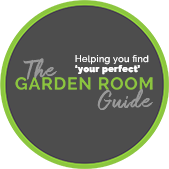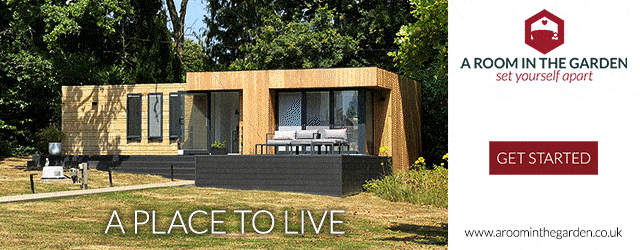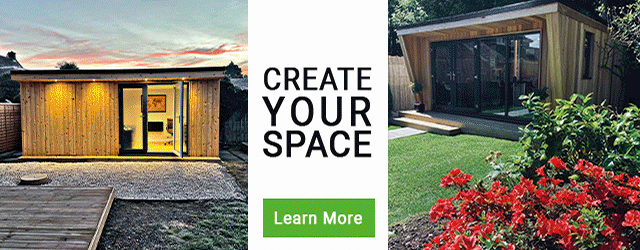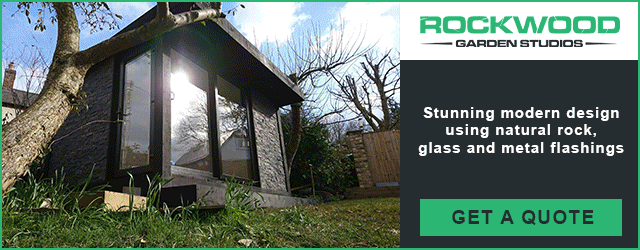There are two main methods in garden room wall construction – timber studwork or SIP’s construction.
Studwork Frame
A timber studwork frame consists of vertical ‘studs’ attached to header and footer plates (horizontals at top and bottom of the frame) with horizontal braces between the studs which are known as noggins. To strengthen the frame and to stop it twisting timber sheathing should be fixed to the outside of the studwork, this is often in the form of sheets exterior grade plywood or orientated strand board (OSB).
Traditionally fibreglass insulation is stuffed into the gaps in the studwork frame, and modern insulations such as sheep’s wool and hemp can be fitted like this, however this insulation would need to be very thick (meaning the wall would have to be extra thick) to meet current building regulation u-values (the rate at which heat is lost from a building). The alternative is to use a rigid insulation which gives better performance per thickness, meaning that a narrower amount of insulation can be used. The best form of insulation for a garden room is to use a combination of insulation between the studwork and rigid insulation fixed to the outside, this is the best of both worlds as you are making use of the space between the studs and encasing the walls in insulation meaning there will be no ‘cold spots’. Cold spots are areas where there is no insulation such as where the studs are or at the corners of a room where the frames join together.
SIP’s Construction
The alternative to a studwork frame and insulation described above is Structural Insulated Panel’s (SIP’s) these are basically a sandwich of structural boards with a rigid insulation filling. These panels are load bearing meaning that no timber framework is required. This method of construction is very quick as the panels lock together and are very thermally efficient as the insulation covers the whole wall meaning there are no cold spots.
All Garden Room Walls
Membranes
All garden room wall construction should incorporate two membranes, a breather membrane and a vapour membrane. The breather membrane is fixed to the outer side of the wall over the insulation and sheathing but under the cladding, this membrane helps to stop the inward movement of moisture. The vapour membrane goes on the inside of the garden room wall and helps to control condensation.
Air Space
There should be a air space between the breather membrane and external cladding and this is created using treated batten which is fixed in the opposite direction to the cladding i.e. if the cladding is horizontal the batten should be vertical.
Exterior Cladding
The cladding on a garden room is commonly wooden planks of cedar or treated softwood moulded into different patterns such as tongue & groove, shiplap or tapered weatherboarding. Some companies offer metal cladding or composite materials which are generally lower maintenance but give the garden room a different feel.
Internal Cladding
How the inside is finished is dependent on style of building and manufacturer, some garden rooms are lined internally with plasterboard and finished with a plaster skim which creates a conventional room look, whilst other companies line their garden rooms with tongue & groove boards which once painted create a soft shaker style finish. The final option is to use sheet wood products such as plywood, the problem here is that the joins have to be disguised which can create a less than perfect finish.









